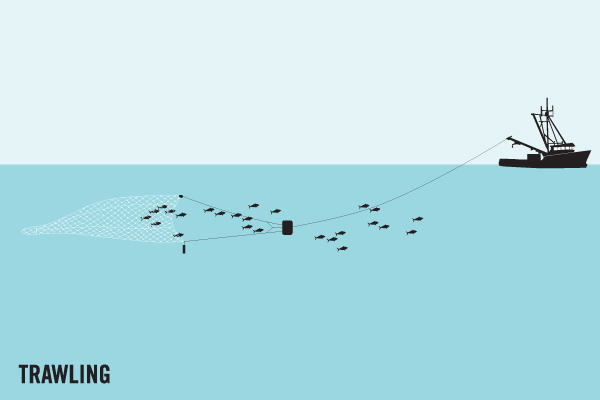Average Weight/Length
Common to 100 pounds, they can grow to over 6 feet in length and 400 pounds. This is the second-largest Grouper, commonly caught at 30-80 pounds, with 100-pounders not rare. Probably grows to more than 500. World and Florida records 436 pounds, 12 ounces.
Other "Popular" Names for this Fish
Giant Grouper, Black Jewfish, Garrupa Negrita
Location Habitat
Deep rocky ledges and sea mounts, in 90-300 m (300-1000 ft). Young are sometimes caught in inshore waters. A solitary species usually found on rocky bottoms; juveniles are occasionally seen on jetties and shallow reefs. Adults feed on a variety of crabs, shrimps, lobsters, and fishes.
Biology & Physical Description
This species is found Gulfwide, but is more common in the northern Gulf of Mexico. Smaller fish may be found shallower than 100 feet deep, but warsaw grouper, especially larger specimens, are most common deeper than 200 feet, commonly out to 700 feet. They are found in a wide variety of habitats, offshore oil and gas platforms, rock piles, coral, hard bottom encrusted with living organisms (live bottom), ledges, and drop offs. The warsaw grouper’s overall body color is a dark mottled brown. The second spine of the dorsal fin is noticeably longer than the others and the spiny part of the fin appears crest-like, resembling a rooster comb. A dead give-away to identification is that this is the only grouper in the Gulf of Mexico with 10 spines in the dorsal fin. Warsaw grouper are long-lived, to at least 25-30 years. They are not well researched, in spite of the glamour of their size and their wide distribution. Because of their large size and power, only the heaviest equipment with heavy line can be used. A strike can be interpreted as a hangup on the bottom. They will hug the bottom and often attempt to swim under obstructions. Dorsal spines (total): 10; Dorsal soft rays (total): 13-15; Anal spines: 3; Anal soft rays: 9. Distinguished by the following characteristics: dark reddish brown or brownish grey to almost black dorsally, dull reddish grey below; depth of body contained 2.4-2.6 times in SL; head length 2.1-2.5 times in SL; distinctly convex interorbital area; angular preopercle, rounded angle, with slightly enlarged serrae and with 1-2 small spines on lower edge just in front of angle; smooth interopercle and subopercle; subequal nostrils, posterior nostrils slightly larger; maxilla reaches well past eye; 4-5 rows of small teeth on midside part of lower jaw in adults and juveniles with 2-3 rows
Geographic Species Map (Fishbase.org Map)
|
|

|
Summary of Distribution: Western Atlantic: Massachusetts, USA to the Gulf of Mexico, Cuba, Trinidad, Rio de Janeiro and Sao Paulo, Brazil. Rare in the West Indies (Cuba, Haiti, and Trinidad). Reports from the eastern Pacific are apparently misidentifications of Epinephelus exsul. |
|
Note: Distribution range colors indicate degree of suitability of habitat which can be interpreted as probabilities of occurrence (fishbase.org) |
|
Sport Fishing Techniques
|
|
Kite Fishing (Rig)A Kite Fishing Rig is.... |
|
|
|
River DriftRiver Drift means to use the.... |
|
|
|
TrawlingTrawling is when.... |
|
Tackle & Baits
Only the heaviest rods, large reels and lines testing 80 pounds or more are really adequate. Catches on lighter tackle are opportunistic and rare, and usually of the smaller specimens. Fairly large whole fish, or halved bonito and other hefty cut baits are all productive whenever they can be dropped to within gulping range of a Warsaw.
Game Rating
Game Rating : 8/10
Game Description :
Great strength is the hallmark of the Warsaw's fighting arsenal, and the angler who gets one on a manual rod and reel will know he's been in a tug-of-war.
Food Rating
Game Rating : 7/10
Game Description :
Good. Large specimens (which most are) can be somewhat coarse unless the fillets are cut into thin steaks for frying or baking.
Picture (Fish)
|
|
|
|
|
Picture Mount
|
|
|
|
|
Product Specs
Available Sizes: 40 in. - 80 in.
Details: Fired-Enamel Glass Eye
Product Options: Wood Plaque, Custom Base, 360°




















 Warsaw Grouper
Warsaw Grouper 










